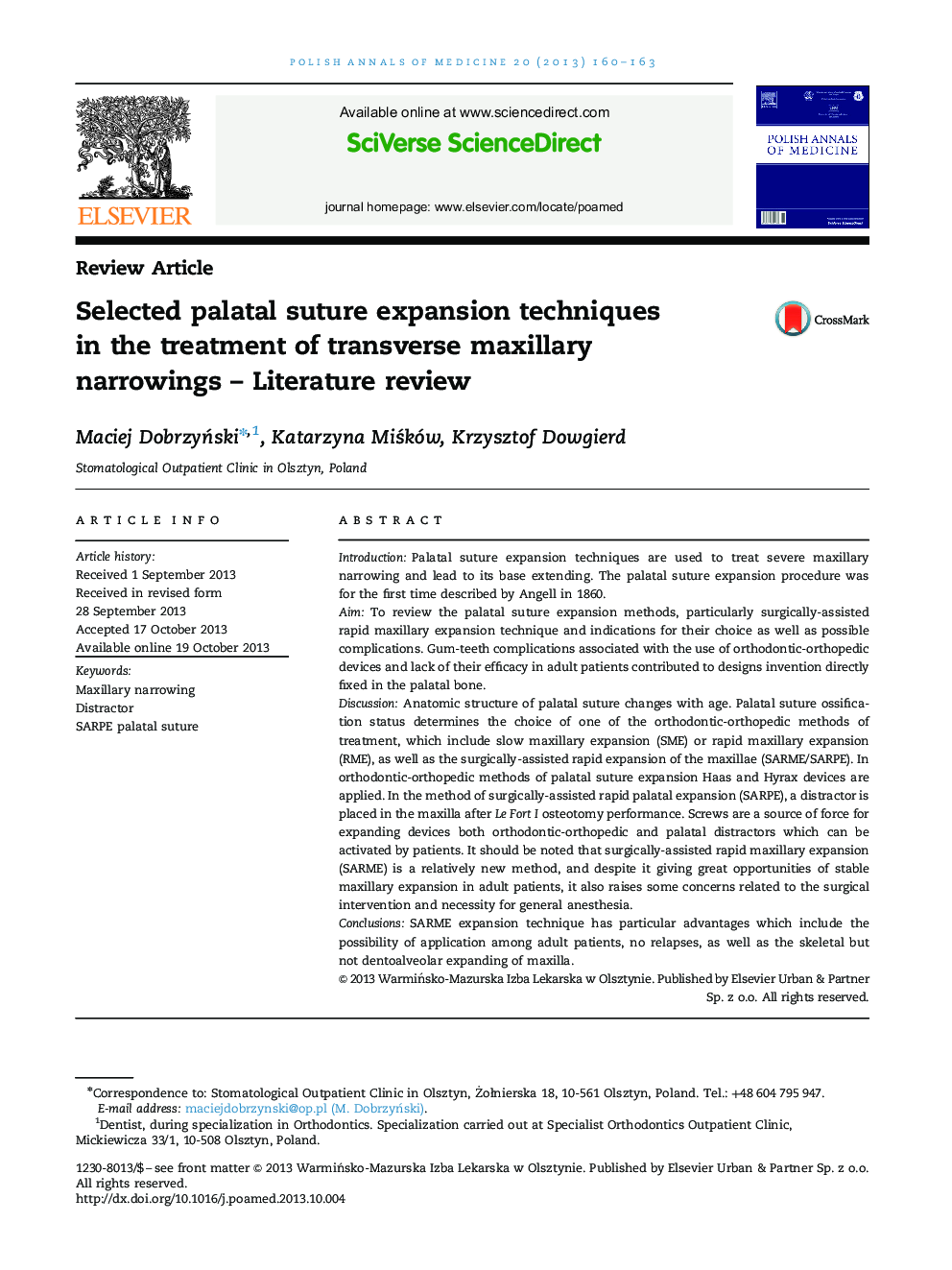| Article ID | Journal | Published Year | Pages | File Type |
|---|---|---|---|---|
| 2678687 | Polish Annals of Medicine | 2013 | 4 Pages |
IntroductionPalatal suture expansion techniques are used to treat severe maxillary narrowing and lead to its base extending. The palatal suture expansion procedure was for the first time described by Angell in 1860.AimTo review the palatal suture expansion methods, particularly surgically-assisted rapid maxillary expansion technique and indications for their choice as well as possible complications. Gum-teeth complications associated with the use of orthodontic-orthopedic devices and lack of their efficacy in adult patients contributed to designs invention directly fixed in the palatal bone.DiscussionAnatomic structure of palatal suture changes with age. Palatal suture ossification status determines the choice of one of the orthodontic-orthopedic methods of treatment, which include slow maxillary expansion (SME) or rapid maxillary expansion (RME), as well as the surgically-assisted rapid expansion of the maxillae (SARME/SARPE). In orthodontic-orthopedic methods of palatal suture expansion Haas and Hyrax devices are applied. In the method of surgically-assisted rapid palatal expansion (SARPE), a distractor is placed in the maxilla after Le Fort I osteotomy performance. Screws are a source of force for expanding devices both orthodontic-orthopedic and palatal distractors which can be activated by patients. It should be noted that surgically-assisted rapid maxillary expansion (SARME) is a relatively new method, and despite it giving great opportunities of stable maxillary expansion in adult patients, it also raises some concerns related to the surgical intervention and necessity for general anesthesia.ConclusionsSARME expansion technique has particular advantages which include the possibility of application among adult patients, no relapses, as well as the skeletal but not dentoalveolar expanding of maxilla.
